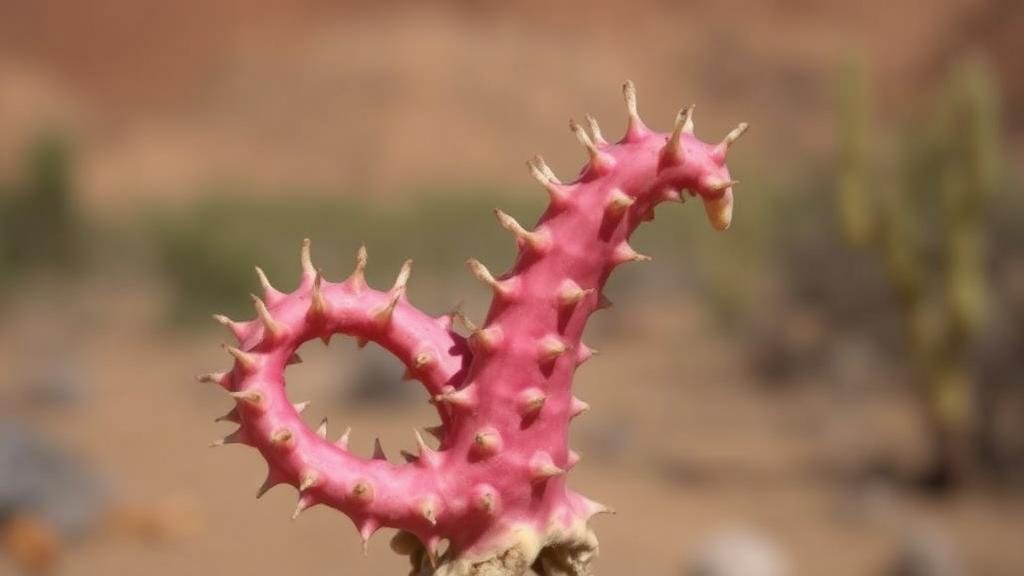Investigating the bizarre morphology of Welwitschia plants in the Namib Desert.
Investigating the Bizarre Morphology of Welwitschia Plants in the Namib Desert
The Welwitschia mirabilis, a remarkable and ancient plant found primarily in the Namib Desert, presents an intriguing study in morphology and adaptation. Known for its unique appearance and extraordinary resilience, Welwitschia has captured the imagination of botanists and nature enthusiasts alike. This article delves into the bizarre morphology of this plant, discussing its adaptations, environmental significance, and the scientific inquiries surrounding it.
A Brief Overview of Welwitschia
Welwitschia mirabilis is classified as a gymnosperm and belongs to the family Welwitschiaceae. Native to the harsh climate of the Namib Desert, spanning parts of Namibia and Angola, this plant is estimated to be around 100 million years old, dating back to the time of the dinosaurs.
Welwitschia is characterized by its two strap-like leaves that grow continuously throughout its life. These leaves can reach lengths of several meters, with some individuals achieving a size of over 2 meters wide. The plant typically has a stout, woody trunk and can live for over a thousand years, making it a true marvel of evolution.
Morphological Characteristics of Welwitschia
The morphology of Welwitschia is both peculiar and perfectly adapted to its environment. Here are the key characteristics that define this extraordinary plant:
- Two Leaves: Unlike most plants that produce multiple leaves, Welwitschia develops only two leaves that grow continuously from the base throughout its life. This unique strategy helps the plant minimize water loss in an otherwise arid environment.
- Caudex: The caudex, or the thickened stem base, serves as a water reservoir. This adaptation allows Welwitschia to survive long periods of drought, which is crucial given the scarcity of water in the Namib Desert.
- Photosynthesis: The large, flat leaves, which become tattered over time, maximize sunlight absorption. Also, their structure minimizes wind resistance, reducing damage from the deserts harsh conditions.
- Reproductive Structures: Welwitschia is dioecious, meaning individual plants are either male or female. Male plants produce pollen cones, while female plants develop seed cones, contributing to the species reproduction.
Adaptations to Colossal Challenges
Welwitschias survival in one of the worlds oldest and driest deserts is a testament to its remarkable adaptations. The Namib Desert experiences annual rainfall of less than 20 mm, and yet, Welwitschia thrives due to several strategic features:
- Deep Roots: Welwitschia plants have extensive root systems that can extend several meters underground, tapping into subterranean moisture.
- Thick Cuticles: The leaves are coated with a thick cuticle that reduces transpiration, allowing the plant to conserve water.
- Stomatal Regulation: Stomata on the leaf surface help regulate gas exchange, closing during dry conditions to further minimize water loss.
Scientific Research and Exploration
The study of Welwitschia has garnered interest from various scientific fields, including botany, ecology, and evolutionary biology. Researchers have explored its unique adaptations, longevity, and its role in the desert ecosystem. For example, a study published in the journal Botanical Journal of the Linnean Society emphasized the evolutionary significance of Welwitschia, particularly in understanding plant morphology and survival strategies in extreme environments.
Also, the plants unique lifecycle and its role as a keystone species in the Namib Desert provide critical insights into desert ecosystem dynamics. Its continuous growth pattern and longevity make it an excellent subject for long-term ecological studies.
Conclusion and Future Considerations
Welwitschia mirabilis stands out as a highly adaptable organism, exemplifying natures ingenuity in the face of extreme environmental challenges. As research continues, it will be imperative to monitor the impacts of climate change on its population and habitat. Conservation efforts are essential to protect this ancient species, ensuring that future generations may also marvel at its bizarre morphology and resilience.
In summary, Welwitschias extraordinary adaptations, from its unique morphology to its strategies for surviving in drought conditions, highlight the importance of understanding biodiversity in extreme environments. Engaging with this remarkable plant can inspire conservation initiatives and further exploration of desert habitats.



